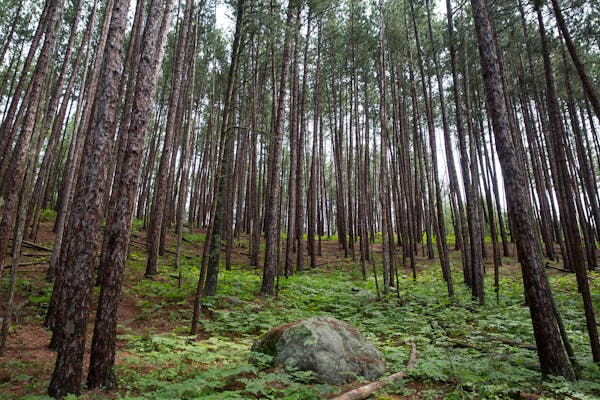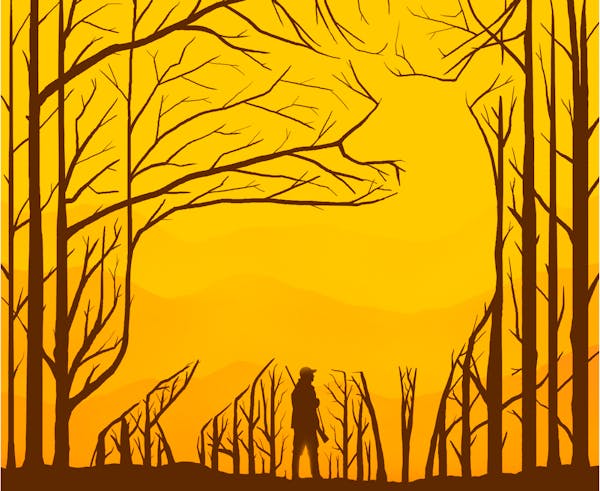For a bird so sensitive to temperature, ring-necked pheasants have shown they can bounce back when, occasionally, extreme temperatures threaten their survival.
But imagine increasing waves of heat so prolonged and so intense the popular game bird leaves a region entirely.
Ron Leathers has summoned the image.
A climate model by National Audubon Society scientists showed a 3-degree Celsius increase (or about 5.4 degrees Fahrenheit) in average daily temperature would reduce the wintering southern range of pheasants by about 40%. Even the possibility of a 1.5-degree hike — some scientists say global greenhouse gas emissions must top out by 2025 to cap warming at 1.5 degrees — would push pheasants north. Periods of intense drought such as those forecast as the climate changes hamper food sources and vegetation pheasants need, limiting chick production, food and cover.
While pheasants can be found in the Texas Panhandle, their southern limit is about a half-day's drive away — across Kansas, and parts of northern Missouri and Illinois.
"If you pull [that southern range] up, that eliminates Kansas as a pheasant state. That's a problem," said Leathers, a wildlife biologist and Pheasants Forever's chief conservation officer.
Biologists and conservationists focused on waterfowl have the same concerns about sustainable habitat in the crosshairs of an ecological crisis that could disrupt where birds breed and migrate. The combination of vegetation and open water still makes what remains of Minnesota's prairie wetlands key bird-producing and migratory habitat.
Computer-based population modeling generally shows stability among Minnesota's geese and ducks. But state waterfowl biologists say further warming could trigger a chain reaction in wetlands these birds need by altering the production of invertebrates and vegetation.
The National Wildlife Federation said sustained drought in the Prairie Pothole region, including portions of the Dakotas and Minnesota, could lead to as much as a two-thirds decline in the abundance of ducks breeding, affecting everything from mallards and gadwall to blue-winged teal and pintails.
The Prairie Pothole region is home either during breeding season or migration to more than 50% of North American migratory waterfowl. Another 150 species of songbirds and water and upland birds use the region as well.
John Coluccy is Ducks Unlimited's conservation planning director in its Great Lakes/Atlantic region. He said a cycle of drought and precipitation can be a good thing for emergent vegetation — a sort of reset to balance the habitat and allow the seeds of some aquatic plants to germinate. Still, wetlands are believed to be highly sensitive to temperature, and the Prairie Pothole region is the "breadbasket" of duck production, he said.
Steve Cordts, a Department of Natural Resources waterfowl specialist in Bemidji, has monitored weather for years, using the data to inform dates for duck seasons. Unmistakable in the "last couple of decades" have been the extremes of heat or cold or cross-seasonal impacts on waterfowl like ice-in and ice-out, he said.
"It seems like almost every season now, spring or fall, there is some sort of record. … I think that certainly has impact on waterfowl in a lot of ways, but it's currently hard to explain exactly how," he said.
Cordts said Minnesota's diversity of wetlands — the prairie potholes or the forest wetlands that harbor, for example, mallards and wood ducks — could provide some safeguard as the climate changes.
Coluccy and Cordts sounded hopeful because of the resiliency of ducks. Across species, they are remarkably adaptable and routinely settle elsewhere when their habitat is altered or disappears entirely, whether because of natural or human-made events, such as wetlands being drained or transformed for agricultural and commercial use.
Hunters also could encounter altered habitats and species, Coluccy said.
"It's a complex, interwoven beast," he said, "and ultimately there are going to be some winners and losers."
He said widespread, significant drought could force multiple breeding ranges to shift or change the timing of migrants on the fly. Then, hunters might find themselves, say, shooting smaller ducks on their home turf, or driving farther north to find others.
"There are going to be some duck hunters who are not going to be happy and in other areas they might be really happy," he said.
Coluccy and Leathers, the Pheasants Forever (PF) specialist, said they are focused on building and restoring habitat as barriers to mitigate what appears to be accelerating extremes of climate change.
Leathers said getting more grassland "back on the landscape" is paramount; an estimated 50 million acres have been converted to cropland in the past decade, he said. PF wants to see more acres for grassland in the Conservation Reserve Program (CRP), in which ag producers are paid to set aside parcels to create habitat or maintain what they have.
Grasslands are seen as "carbon sinks," reservoirs of land that keep carbon in the soil and out of the atmosphere. It's land, too, that limits flooding and erosion during extreme weather, Leathers said.
The U.S. Agriculture Department (USDA), which enrolls landowners in CRP, said earlier this month the Farm Service Agency (FSA) in Minnesota enrolled 2,259 acres in grassland CRP, part of 2.5 million enrolled nationally this year. The FSA said the nation's total will reduce the equivalent of 22,000 metric tons of carbon dioxide from the atmosphere.
The 2018 U.S. Farm Bill set a cap of 25 million total acres in CRP in 2021, and the USDA is about 4 million acres short of its target.
Along with other conservation groups, PF is pushing a new North American Grasslands Conservation Act modeled after the North American Wetlands Act of 1989, as a second salvo against habitat loss.
"Most of those producers we're working with want to see birds out there," Leathers said.
Susan Galatowitsch, a professor in the University of Minnesota's Department of Fisheries, Wildlife and Conservation Biology, said wildlife groups will be limited by competition for land — "whether society is going to consider it more important for food supply or whether wildlife and natural resources will have a seat at that table."
Restoration will never return wetland and grassland habitat to some "historic standard," she said, but conservationists' work remains vital to ducks, pheasants and other wildlife.
"Even if we can't make the best prairies that we might ever want to make, we have a need to keep that perennial habitat cover on grasslands and keep water on the land and wetlands and do the best job we can," Galatowitsch said. "And we have an incredible restoration capacity in this state."

Taylor Pendrith rolls into second-round lead at 3M Open
Coughlin holds into CPKC Women's Open lead; Canadian star Henderson derailed by closing bogeys





